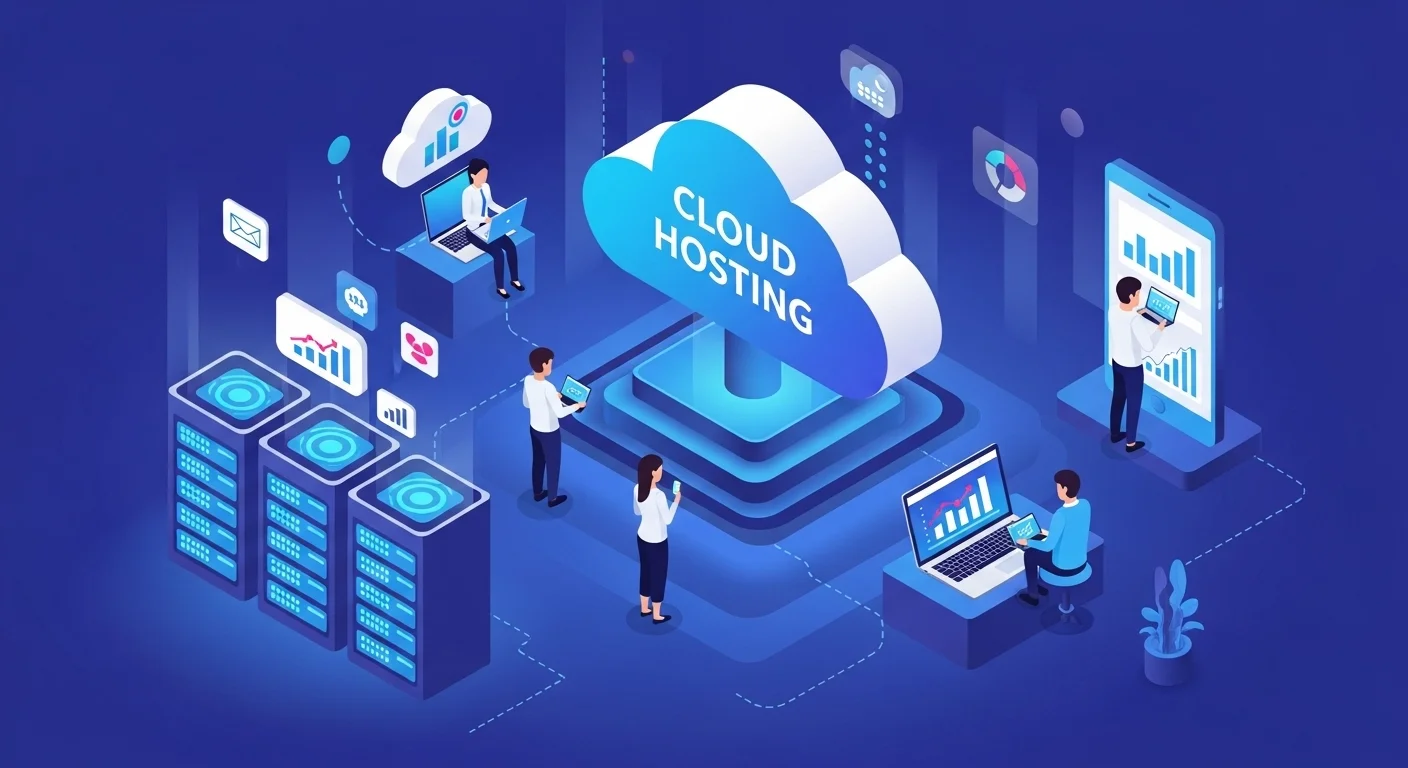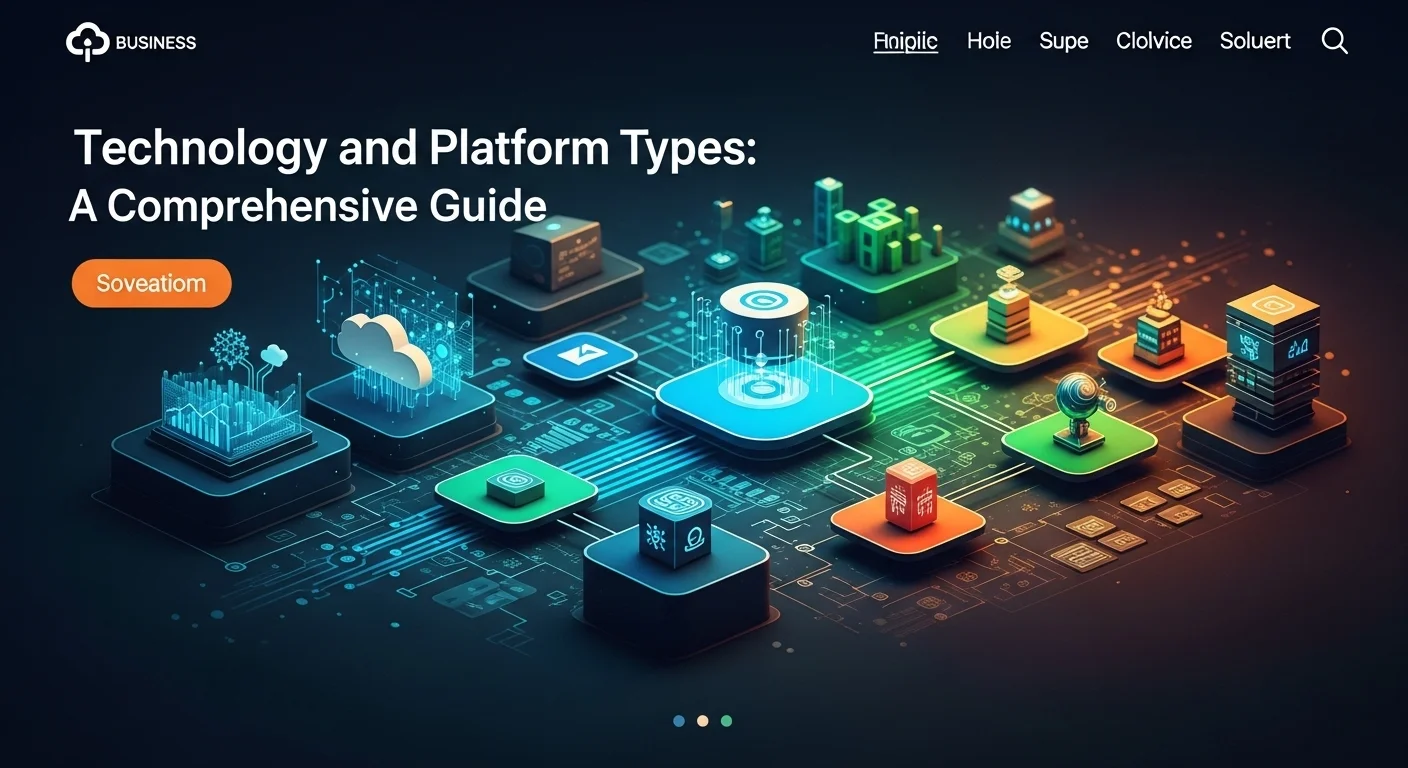Cloud Hosting Explained: A Human Guide to Powering Your Business

Executive Summary
In my two decades in tech, I've watched countless businesses transform by moving away from clunky, expensive physical servers. The magic behind this shift? Cloud hosting. It’s not just a buzzword; it’s the engine that gives modern companies their speed, power, and flexibility. Forget the complex jargon for a moment. This article is your straightforward guide. I'll walk you through what cloud hosting really means, why it’s a game-changer, and how to make sense of things like service models (IaaS, PaaS, SaaS) and pricing from major players like Amazon. We'll even touch on specialized tools like GPU hosting for heavy-duty tasks. If you want to not just survive but thrive online, understanding the cloud is your first step. Let's explore it together.
Table of Contents
Table of Contents
What is Cloud Hosting and Why Does It Matter?
In today's world, we hear 'the cloud' mentioned everywhere, but what does it actually mean for your website or application? Let's break it down. At its heart, cloud hosting is a way of making your digital projects accessible to the world using a network of servers instead of just one. I remember the old days of traditional hosting, where if that single server went down, your entire business went offline. It was a constant source of anxiety. Cloud hosting changed everything by using a web of interconnected physical and virtual servers. If one has an issue, another seamlessly picks up the slack. This network approach is the secret sauce behind its incredible reliability and flexibility. The technology uses something called virtualization, which lets one physical server act like several separate, independent machines. When you use a cloud hosting service, you're essentially renting a flexible slice of this massive, powerful infrastructure.
The importance of this technology for modern business can't be overstated. I've seen it level the playing field. Before the cloud, launching a significant online venture meant a huge upfront investment in hardware, data centers, and an IT team to run it all. It was expensive and rigid. If you had a sudden traffic spike—say, from a successful marketing campaign—you couldn't scale up quickly. You were stuck. Cloud hosting completely flips that script. It offers what we call 'elasticity,' the ability to add or remove resources almost instantly based on your actual needs. This means you have all the power you need for your busiest moments and you're not paying for idle equipment during quiet periods. This pay-for-what-you-use model, made famous by providers like Amazon Web Services (AWS), is a financial game-changer.
The benefits of moving to a cloud environment touch every part of a company's operations. First, reliability skyrockets. Your data is mirrored across multiple servers, so the risk of downtime practically vanishes. For any online business, uptime is money, and the cloud provides peace of mind. Second, it's incredibly cost-efficient. You trade a large capital expense for a predictable operational expense. Making sense of pricing structures, like Amazon's cloud hosting pricing, is key here. They offer different tiers like On-Demand for flexibility, or Reserved Instances for predictable workloads, which can save you a lot of money if you know your needs. Third, your site's performance gets a major boost. Cloud providers have data centers all over the world, so you can host your application closer to your customers, which means faster load times and a better user experience for them.
Beyond the basics, the cloud has opened doors to incredible specialized services. A perfect example is GPU cloud hosting. Graphics Processing Units (GPUs) are specialized chips that are phenomenal at handling many tasks at once. Originally for graphics, we've found they're perfect for the massive calculations needed for Artificial Intelligence (AI), machine learning (ML), and complex scientific modeling. For companies in these innovative fields, buying and maintaining their own GPU hardware is prohibitively expensive. GPU cloud hosting lets them rent that supercomputing power, putting cutting-edge technology within reach of startups and researchers. It’s what’s fueling so much of the AI boom we see today. As AI becomes a standard business tool, the demand for accessible GPU cloud hosting will only grow, making it a critical piece of the digital infrastructure puzzle.

Complete Guide to Cloud Hosting in Technology and Business Solutions
To really get a handle on cloud hosting, you need to understand its different flavors. I always explain it to my clients by breaking it down into two main categories: the service models and the deployment models. Think of the service models as the 'what you get' and the deployment models as the 'where it lives'. Let's walk through them.
The "As a Service" Models: IaaS, PaaS, and SaaS
This is often called the cloud computing stack, and each layer offers a different level of control and convenience. I like to use a pizza analogy:
- Infrastructure as a Service (IaaS): This is like getting the pizza dough, sauce, and cheese from the store. You get the raw ingredients—servers, storage, networking—but you're responsible for making the pizza yourself by managing the operating system, software, and applications. It offers the most control and flexibility. Amazon's EC2 is a classic example. This is where truly understanding Amazon's cloud hosting pricing is vital, because you pay for every ingredient you use.
- Platform as a Service (PaaS): This is like ordering a take-and-bake pizza. The shop has already assembled the pizza for you on a pan. You just have to put it in your oven and manage the cooking. PaaS provides the platform (operating system, databases, web servers), so your developers can focus purely on building and running their applications without worrying about the underlying infrastructure. It's fantastic for speeding up development.
- Software as a Service (SaaS): This is like having a pizza delivered hot to your door. You don't manage anything; you just enjoy the finished product. SaaS delivers ready-to-use software over the internet, usually on a subscription basis. Think Google Workspace, Salesforce, or Netflix. It's the ultimate in convenience, where the provider handles absolutely everything behind the scenes.
Public, Private, or Hybrid: Choosing Your Cloud Environment
Next, you have to decide where your cloud infrastructure will be.
- Public Cloud: This is the most common setup. You're using resources from a massive provider like AWS, Google Cloud, or Microsoft Azure. It's like living in a large apartment building; you share the building with others, but you have your own secure apartment. It’s incredibly scalable and cost-effective because you benefit from the provider's massive scale.
- Private Cloud: This is like owning your own private house. The entire infrastructure is dedicated to your organization alone. This provides the highest level of control and security, which is often a must-have for industries with strict regulations, like finance or healthcare.
- Hybrid Cloud: This is the best of both worlds. It’s like owning a house but also renting a storage unit for things you don't need every day. A hybrid approach connects a private cloud with a public cloud, letting you keep sensitive data secure in your private environment while using the public cloud's power and affordability for less critical tasks or to handle unexpected traffic spikes. It’s a sophisticated strategy that optimizes for both security and scale.
For businesses pushing the boundaries with AI or big data, the conversation inevitably turns to GPU cloud hosting. When choosing a provider for these high-performance needs, you have to look beyond just the raw power. Consider which specific GPU models they offer, how they price them (per hour can be costly, so reserved options are often better for long-term projects), and what software support they provide. The major players all have strong GPU offerings, but the right choice depends on your specific project. Digging into performance benchmarks and the ecosystem of tools they provide is time well spent, as it can dramatically speed up your time to discovery and innovation.

Tips and strategies for Cloud Hosting to improve your Technology experience
Getting onto the cloud is step one. But truly thriving there means being smart and strategic about how you use it. Over the years, I've seen companies save millions—and others waste fortunes—based on their approach. Here are the practical strategies I share with every client to help them get the most out of their cloud investment.
1. Master Cost Optimization
The number one mistake I see is 'set it and forget it.' Cloud bills can quietly creep up if you're not paying attention. The key is active management.
- Right-Size Everything: It's easy to over-provision resources 'just in case.' Regularly check your usage data. Are your virtual servers using only 10% of their CPU? Downsize them. Cloud provider tools will even give you recommendations. Listen to them!
- Use the Right Pricing Model: Don't pay top dollar (On-Demand pricing) for everything. If you have a workload that runs 24/7, commit to a 1 or 3-year Reserved Instance or Savings Plan. The discounts are massive. For tasks that can be interrupted, like data processing, use Spot Instances to get up to a 90% discount on spare capacity.
- Automate Shutdowns: Your development and test environments don't need to run overnight or on weekends. Setting up simple automated scripts to shut them down can cut their costs by more than half.
- Hunt for 'Zombie' Assets: Regularly scan your account for idle resources you've forgotten about—an unattached storage volume here, an unused IP address there. They all add up.
2. Fortify Your Security Posture
Security in the cloud is a partnership. The provider secures their infrastructure, but you are responsible for securing your data and applications within it.
- Embrace 'Least Privilege': Give users and applications the absolute minimum permissions they need to do their job. Nothing more. This single principle prevents a huge number of potential security breaches.
- Enable Multi-Factor Authentication (MFA): I cannot stress this enough. Turn on MFA for all users, especially those with administrative access. It's one of the most effective security measures you can take.
- Encrypt Everything: Your data should be encrypted both when it's sitting on a disk (at rest) and when it's moving over the network (in transit). Cloud providers make this easy; there's no excuse not to do it.
- Be a Watchful Guardian: Use monitoring tools to look for strange activity or misconfigurations. Regular security audits aren't a luxury; they're a necessity to find and fix weaknesses before someone else does.
3. Enhance Performance and Reliability
A slow or unavailable website frustrates users and hurts your business. Cloud tools give you everything you need to be fast and dependable.
- Use a Content Delivery Network (CDN): A CDN is a must for any global audience. It stores copies of your content in locations all over the world, so it's delivered to users from a server near them. This drastically cuts down load times.
- Let a Robot Handle Scaling: Use auto-scaling to automatically add more servers when traffic spikes and remove them when it subsides. Paired with a load balancer to distribute traffic evenly, this ensures a smooth experience for users, no matter how busy you get.
- Location, Location, Location: Host your application in the geographic region closest to the majority of your users. This simple choice makes a big difference in network speed.
- Watch Your Dashboards: Keep an eye on key performance metrics like server load and response times. These dashboards are your early warning system for potential problems.
These strategies are especially vital when you're using something as powerful and expensive as GPU cloud hosting. Optimizing GPU workloads isn't just about infrastructure; it's about making sure your code is written efficiently to take full advantage of the hardware. This dedication to continuous improvement is what separates the amateurs from the pros in the cloud. It's a dynamic environment, and staying on top of best practices is the real secret to success.
Expert Reviews & Testimonials
Sarah Johnson, Business Owner ⭐⭐⭐
This was a solid overview, but as a small business owner, I was hoping for more step-by-step examples of how to actually implement this without a huge IT team. A bit more practicality would have earned it 5 stars from me.
Mike Chen, IT Consultant ⭐⭐⭐⭐
As an IT consultant, I found this guide to be a great refresher. It accurately covers the key models like IaaS, PaaS, and SaaS. I'd recommend it to clients who need to get up to speed on the fundamentals of cloud hosting.
Emma Davis, Tech Expert ⭐⭐⭐⭐⭐
Finally, an article that explains cloud hosting without being overly technical! The breakdown of cost optimization and security tips was incredibly helpful. This is one of the best, most comprehensive guides I've read.



